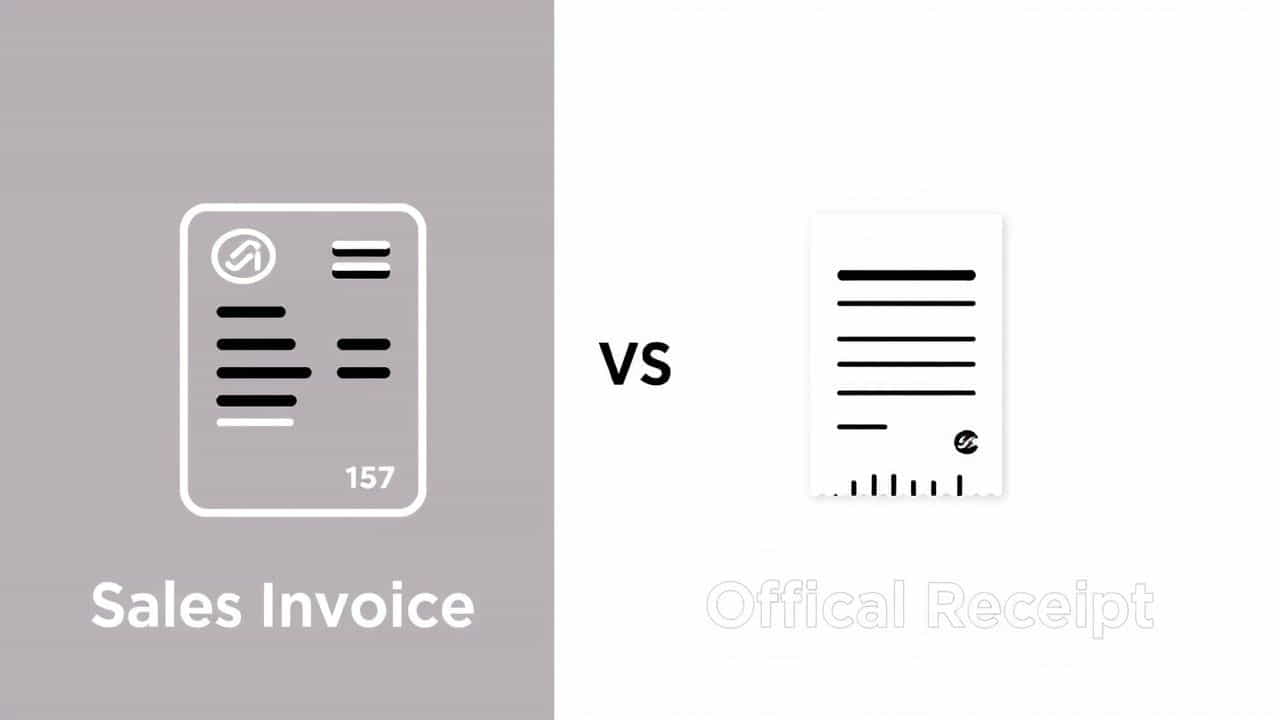When conducting business transactions, documents like sales invoices and official receipts play a crucial role in record-keeping, taxation, and customer relations. However, many people confuse these two documents and use them interchangeably.In this topic, we will break down the differences between a sales invoice and an official receipt, their purposes, legal implications, and when each should be issued. Understanding these distinctions can help businesses stay compliant and maintain accurate financial records.
What Is a Sales Invoice?
A sales invoice is a document issued by a seller to a buyer, indicating that a sale has been made and payment is expected. It serves as a request for payment and provides a detailed record of the transaction.
Key Elements of a Sales Invoice
A sales invoice typically includes the following information:
-
Seller’s business name and contact details
-
Buyer’s name and contact details
-
Invoice number and date of issue
-
Description of goods or services provided
-
Quantity and unit price of each item
-
Total amount payable, including taxes
-
Payment terms (due date, method of payment, etc.)
When Is a Sales Invoice Issued?
A sales invoice is issued when a seller delivers goods or services but has not yet received payment. It serves as proof that a transaction has occurred and that payment is due.
What Is an Official Receipt?
An official receipt (OR) is a document issued when a payment has been received. It acts as proof that a customer has completed their payment for goods or services.
Key Elements of an Official Receipt
An official receipt generally includes:
-
Seller’s business name and contact information
-
Buyer’s details
-
Official receipt number and date of issue
-
Amount paid and payment method
-
Breakdown of taxes (if applicable)
-
Signature or stamp of the seller
When Is an Official Receipt Issued?
An official receipt is issued after payment has been made, confirming that the transaction has been settled.
Key Differences Between a Sales Invoice and an Official Receipt
| Feature | Sales Invoice | Official Receipt |
|---|---|---|
| Purpose | Request for payment | Proof of payment received |
| Issued When | Goods/services are delivered, but payment is pending | Payment has been received |
| Payment Status | Payment is still due | Payment has been completed |
| Document Type | Billing document | Acknowledgment of payment |
| Legal Importance | Used for tracking receivables and taxation | Used as proof for tax compliance and expense claims |
| Example Usage | A business sends an invoice to a client for services rendered | A store issues a receipt when a customer pays for a product |
Legal and Tax Implications
For Businesses
-
A sales invoice is crucial for tracking revenue and unpaid transactions.
-
An official receipt is necessary for tax compliance, as it serves as proof of revenue earned.
For Customers
-
A sales invoice shows the amount they owe and the details of their purchase.
-
An official receipt is used for claiming expenses, tax deductions, and refunds.
Government and Tax Authorities
In many countries, tax authorities require businesses to issue official receipts for every completed transaction. Sales invoices are also required for VAT reporting and auditing purposes.
When Should You Issue a Sales Invoice or an Official Receipt?
Scenario 1: A Business Sells on Credit
If a business sells products or services but allows the customer to pay later, a sales invoice should be issued first. Once the customer makes a payment, an official receipt is provided.
Scenario 2: A Customer Pays Immediately
If a customer pays at the time of purchase, such as in a retail store or restaurant, an official receipt is issued right away.
Scenario 3: Service Providers and Freelancers
Freelancers and service-based businesses typically issue a sales invoice after completing their work. Once payment is received, they provide an official receipt to acknowledge the transaction.
Why Understanding These Documents Matters
1. Prevents Financial Mismanagement
Knowing the difference between a sales invoice and an official receipt helps businesses manage accounts receivable properly and track outstanding payments.
2. Ensures Compliance with Tax Laws
Issuing the correct documents at the right time helps businesses avoid penalties from tax authorities and ensures smooth financial audits.
3. Improves Customer Relations
Providing clear and accurate documents helps build trust with customers, making transactions more transparent and professional.
4. Helps in Dispute Resolution
Having a proper record of sales invoices and official receipts can help resolve disputes over payments and transactions.
Common Misconceptions
1. A Sales Invoice and an Official Receipt Are the Sameâ
This is incorrect. A sales invoice is a request for payment, while an official receipt confirms that payment has been made.
2. You Don’t Need an Official Receipt If You Have a Sales Invoiceâ
This is a mistake. Some tax regulations require businesses to issue official receipts even if a sales invoice has already been provided.
3. Only Large Businesses Need to Issue These Documentsâ
Even small businesses, freelancers, and self-employed professionals should issue proper invoices and receipts for tax compliance and financial tracking.
Understanding the differences between a sales invoice and an official receipt is essential for businesses and customers alike. While a sales invoice is used to request payment, an official receipt serves as proof of payment.
Issuing the correct document at the right time helps businesses stay compliant, manage finances efficiently, and build trust with clients. Whether you are a business owner, freelancer, or consumer, knowing how these documents work can improve your financial transactions and record-keeping.
